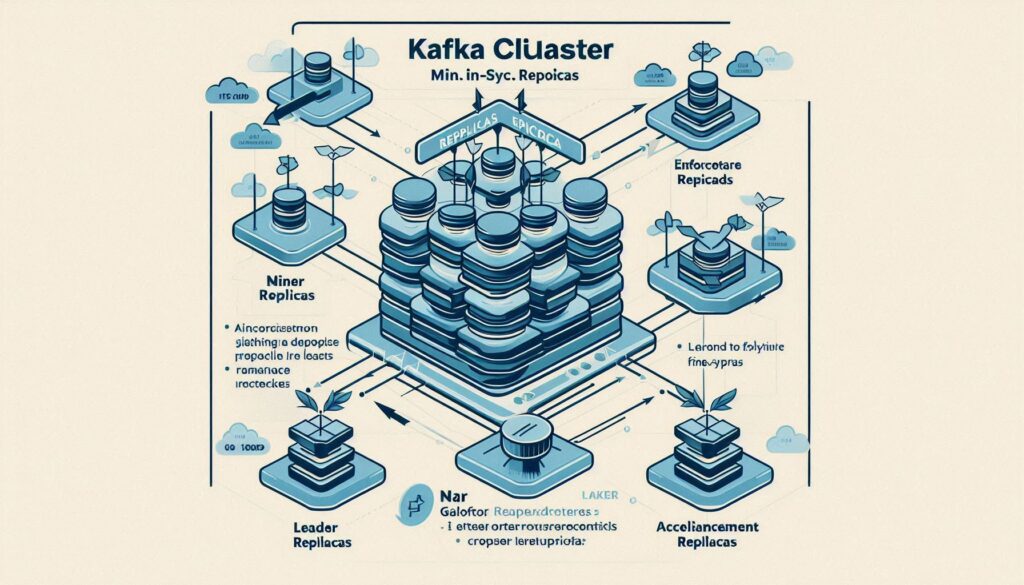Estimated reading time: 6 minutes
Apache Kafka is one of my go-to platforms for reliable, high-throughput, low-latency data streaming. A key feature that makes Kafka so efficient is its ability to process records in batches. Kafka Records Batching is essential for improving performance, reducing latency, and optimizing the use of network and system resources.
In this guide, I’ll explain how Kafka Records Batching works, why it’s important, and how you can fine-tune it for your specific use case.
Table of contents
What is Kafka Batch Processing?
In Kafka, records (also known as messages) are grouped into batches before they are sent to brokers. This technique, known as batching the records on the producer, bundles multiple records into a single unit to be sent over the network. Doing so reduces network overhead, improves throughput, and makes Kafka more efficient.
Think of Kafka Records Batching like mailing letters. Sending one letter at a time takes much longer and costs more than sending them in bulk. Similarly, Kafka groups records into batches, allowing for more efficient transmission with fewer network round trips.
Batch Headers in Kafka Records Batching
Each batch created during Kafka Records Batching contains not just the records but also a batch header, which holds important metadata. This metadata ensures that Kafka brokers and consumers can correctly process the records within the batch.
The batch header includes:
- Magic Byte: Indicates the record format version (explained further below).
- Compression Type: Specifies the compression algorithm used (e.g., none, gzip, snappy).
- Batch Size: The total size of the batch, including the header and records.
- Offsets: Tracks the base offset and the difference between the first and last records in the batch.
- Timestamps: Captures the time of the first and last records in the batch.
- Producer Info: Identifies the producer and ensures idempotence, which prevents duplicate processing.
This metadata is important for ensuring the smooth and correct processing of records by Kafka brokers and consumers.
The Role of the Magic Byte
The Magic Byte in Kafka is a key field in the batch header. It acts as an identifier that indicates the version of the message format being used. Here’s why it’s important:
- Versioning: Kafka’s message format has evolved over time. The Magic Byte allows Kafka to recognize which version of the format is being used for each batch. For example, newer Kafka versions introduced features like idempotent producers and transactions, which required updates to the message format. The Magic Byte ensures that Kafka can distinguish between these formats.
- Compatibility: The Magic Byte helps Kafka maintain backward compatibility. This means that newer Kafka clients can produce messages that older Kafka brokers or consumers can still process, as long as the Magic Byte is recognized.
- Error Detection: If a batch contains an unrecognized Magic Byte, it signals a problem with the message format, potentially pointing to incompatibility or misconfiguration.
The Magic Byte is critical to ensuring compatibility across different versions of Kafka and helps prevent processing errors.
How Kafka Records Batching Works
Here’s how Kafka Records Batching typically works:
- Record Production: As a producer, when I send records to Kafka, Kafka starts accumulating them in a buffer.
- Batch Creation: Once the buffer fills up (reaching a predefined size or exceeding a time limit), Kafka groups the records into a batch.
- Batch Header Attachment: Kafka attaches a batch header, which includes metadata like the Magic Byte.
- Transmission to Brokers: Kafka sends the batch (with its header and records) to the brokers, where it’s stored in logs.
- Consumers Retrieve the Batch: Consumers read the Kafka batch and use the metadata, including the Magic Byte, to process the records in the correct order.
Tuning Kafka Records Batching Parameters
Optimizing Kafka’s performance involves tuning several Kafka Records Batching parameters. Here are the key parameters that directly affect batch creation behavior and performance:
1. Batch Size (batch.size)
- What it does: The
batch.sizeparameter controls the maximum size of a batch (in bytes) that Kafka can accumulate before sending it to the broker. If the accumulated records exceed this size, the batch is sent immediately. - Why it matters: Setting an optimal batch size is important. A small batch size results in more frequent network trips, reducing throughput. On the other hand, setting it too high might increase memory consumption on both the producer and broker sides.
- How to tune: Tune this based on the size of the messages you’re sending and your available system memory. For small messages, you can increase the
batch.sizeto allow more records to be grouped together for better efficiency.
Example:
# 16 KB, adjust this value based on message size and resource availability
batch.size=16384 2. Linger Time (linger.ms)
- What it does: The
linger.msparameter determines how long the producer will wait before sending a batch, even if the batch size hasn’t been reached. This allows the producer to accumulate more records in the batch. - Why it matters: By increasing
linger.ms, you give Kafka more time to gather additional records before sending the batch, which can increase throughput. However, increasing the linger time introduces a trade-off: a higher linger time can cause higher latency, especially in low-throughput environments. - How to tune: Start with a small value, such as 5-10 ms, and adjust based on the balance you want to achieve between latency and throughput. If you’re sending data in real time, keep
linger.mslower to avoid delays.
Example:
linger.ms=103. Compression Type (compression.type)
- What it does: The
compression.typeparameter specifies the compression algorithm used for the records in a batch (e.g., none, gzip, snappy, lz4). - Why it matters: Compression reduces the size of the records in the batch, which decreases network bandwidth usage and improves throughput. However, compressing and decompressing records takes CPU resources, so there’s a trade-off between CPU usage and network efficiency.
- How to tune: For workloads with large records or repetitive data, using
gziporlz4compression can significantly reduce the size of your messages. Test different compression algorithms to see which offers the best performance for your use case.
Example:
compression.type=lz4 4. Request Timeout (request.timeout.ms)
- What it does: The
request.timeout.msparameter controls the maximum amount of time the producer will wait for a response from the broker before considering the request failed. - Why it matters: If set too low, the producer might prematurely time out requests when the network is slow or overloaded, leading to unnecessary retries. A higher timeout helps in scenarios where there is network congestion or if you’re dealing with slow brokers.
- How to tune: If your environment has consistent network issues or higher latency, consider increasing the request timeout. However, for stable networks, the default value might suffice.
Example:
request.timeout.ms=30000 # 30 seconds Benefits of Kafka Batch Processing
Now that you understand how to tune Kafka Records Batching, here are the main benefits:
- Improved Throughput: By grouping more records into a batch, Kafka minimizes network trips, increasing throughput.
- Reduced Latency: With fewer network round trips, messages are delivered faster, lowering overall latency.
- Efficient Resource Utilization: Batching records enables Kafka to make better use of CPU, memory, and network bandwidth.
- Better Compression: Compressing batches rather than individual messages yields better compression ratios, reducing storage and transmission overhead.
Conclusion
Kafka batch processing is a core feature that allows Kafka to scale efficiently. By fine-tuning batch parameters like batch.size, linger.ms, and compression.type, you can optimize Kafka’s performance for your specific needs. Additionally, understanding the role of the Magic Byte ensures compatibility and seamless upgrades across different Kafka versions.
I hope this guide helps you tune Kafka Records Batching to maximize performance and resource efficiency. Experiment with batch size, linger time, and compression settings to strike the right balance for your application.




